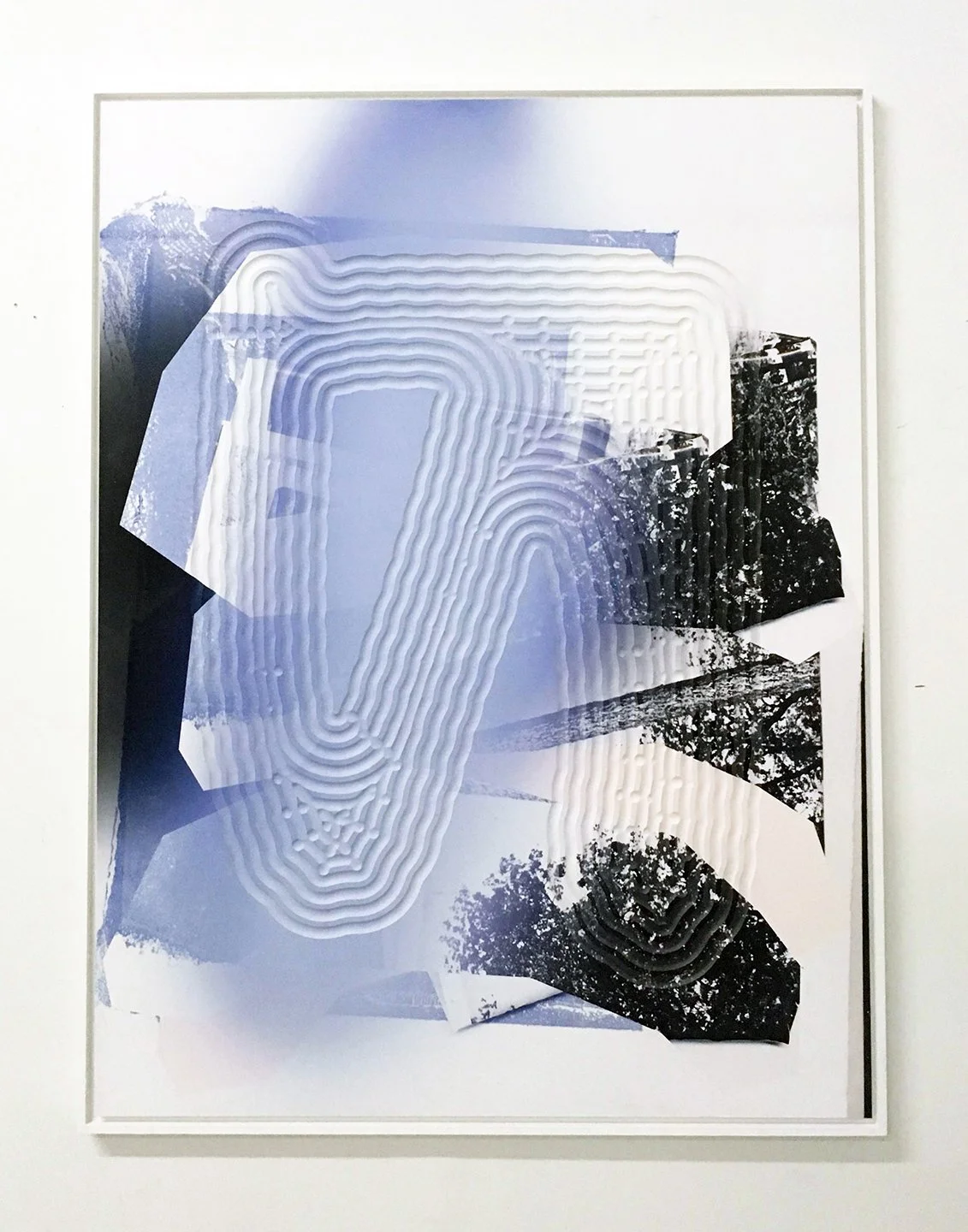An Interview with Kate Bonner
We met artist Kate Bonner at last year's West Coast Craft in San Francisco when she was still a Bay-Area artist! Now she is a recent Philly transplant so can be added to our growing list of talented female artists in Philadelphia (Lindsay and Shelby are already on that list!) Kate's work very much straddles, painting, print and sculpture however the decision she makes in each of those mediums always seems to be informed by the printed page as a structure and site.
When did you start incorporating printed imagery/print techniques into your work?
About seven years ago my practice was driven by drawing and painting, but I became more conceptually interested in the off-handed quick cell phone pictures that I took as progress shots, than in the actual drawings or paintings. The camera added an extra layer of remove and movement and calculation that felt right.
Where do you make your work? Home studio? Shared space?
This past year has been a busy transition year, as I had a baby and then moved from Oakland, California to Philadelphia, Pennsylvania. In order to make the most of my time, I have a home studio. I've redirected the money I would have been paying for studio rent into new studio equipment, such as a large format printer and new power tools. Because we are renovating our house, the lines between home renovation and art making are blurring in some promising ways. Construction tools and art tools are mixing together, and I'm finding myself in a fresh research and development phase.
You have an expansive practice that incorporates painting, photography, sculpture, installation. What role do the printed reproductions/ photographic source material play as a generator of meaning in your work?
Photographs play a large role in my work. They are windows and frames that cut through abstracted surfaces and into a representational place. They are narrative objects that I fragment and negate.
In the current political climate however, I find myself less interested in disrupting narrative, or piecing together fragments, and more interested in dissembling form and structure (impeach!). The present is crowded with half truths, full blown lies, and fragmented syntax. In response, my work is armored, closed down, with extra frames and broken-apart structure.
Who would you love to collaborate with?
These days I'm inspired by furniture, dated architecture, construction sites, and fabrication processes. I'd love be a resident artist with an industrial fabricator, where I could learn from and expand upon their material investigation and manipulation.
I used to print with Magnolia Editions in Oakland, California and learned so much from their knowledge and experience in digital printing. They are a high caliber, innovative crew, inventing and experimenting with printing techniques.
Where are some of your favorite spaces in San Francisco (or Philly if you’ve already found some!) for contemporary art or design?
In San Francisco, I enjoy visiting Minnesota Street Project, which is a warehouse filled with galleries, that also hosts events like artist talks and the San Francisco Art Book Fair. There is a hub of galleries now in the Mission with good shows and fun openings: Et al. etc., Capital, and Ratio 3. Downtown, I like FraenkelLAB, as well as Et al.'s Chinatown location, and R/SF Projects. The Guerrero Gallery space, with its magical garden entryway. I also enjoy the occasional visit to Pier 24. And I attend The Painting Salon lecture series whenever I get a chance.
I'm new to Philadelphia and slow to get to know it, but so far I've really enjoyed shows at High Tide, as well as the Institute of Contemporary Art, where I saw a performance by Suki Seokyeong Kang.
What are you working on at the moment?
At the moment I have the luxury to research and develop new ideas. A recent Philadelphia transplant, I'm scouting future flatbed printing partners, and tool-sharing workshops. New tool purchases are enabling me to try previously-shelved ideas, and I'm experimenting with different substrate materials, and processes that are more akin to furniture-building and construction.

